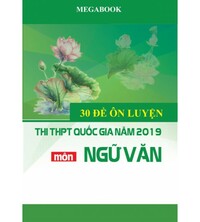Chuyên đề đọc hiểu có đáp án + giải thích
Đọc hiểu có lẽ là một trong phần gây khó khăn và mất thời gian tập trung làm bài nhất của các bạn thí sinh. Hiểu được điều đó, Tìm Đáp Án đã sưu tầm và biên soạn Chuyên đề đọc hiểu có đáp án + giải thích chi tiết dưới đây để giúp các bạn phần nào về cấu trúc ngữ pháp và những mẹo để các bạn có thể xử lý nhanh hơn khi gặp dạng bài này trong bài thi. Sau đây mời các bạn vào tham khảo.
Chuyên đề bài tập phát hiện lỗi sai Tiếng Anh
Chuyên đề các dạng bài tập tự luận môn Tiếng Anh 12
Bài tập chuyên đề Các thì trong Tiếng Anh có đáp án
TOPIC: ENTERTAINMENT
Most of us tend to think of production when we think of mass media industries. After all, it is the output of this production – the papers we read, the cable TV shows we watch – that grab our attention, make us happy or angry, interested or bored. Moreover, most public discussion about mass communication tends to be about production. The latest gossip about that actor will be in what film, the angry comments a mayor makes about the violence on local TV news, the newest CDs by an up-and-coming group – these are the kinds of topics that focus our attention on the making of content, not its distribution or exhibition.
Media executives know, however, that production is only one step in the arduous and risky process of getting a mass media idea to an audience. Distribution is the delivery of the produced material to the point where it will be shown to its intended audience. The activity takes place out of public view. We have already mentioned the NBC acts as a distributor when it disseminates television programming via satellite to TV stations. When Philadelphia Newspapers Inc. delivers its Philadelphia Inquirer to city newsstands, when Twentieth – Century – Fox moves its Musicland stores, they are involved in distribution to exhibitions.
Question 1. In this passage, "arduous" means__________.
A.difficult B. lucrative C. lengthy D. free
Question 2. The passage states that people tend to focus on production because__________.
A. it takes place out of public view
B. mass media companies do not own production divisions
C. the output of mass media is intended to grab our attention
D. companies can function as both producers and distributors
Question 3. In this passage, to "disseminate" means to ______.
A. create B. send out C. take in D. fertilize
Question 4. This passage states that distribution is_________.
A. the first step in mass media production
B. the most talked-about step in mass media production
C. at least as important as production
D. not as important as exhibition
Question 5. The author's purpose in writing this passage is to________.
A. tell an interesting story B. define a concept clearly
C. describe a scene vividly D. argue with the reader
ĐÁP ÁN
1. A 2. C 3. B 4.C 5. B
GIẢI THÍCH CHI TIẾT
Question 1: Đáp án A.
Câu hỏi: Nghĩa của từ "arduous".
Phân tích: vì không có một gợi ý cụ thể nào nên ta xét từng đáp án xem đáp án nào là có lý nhất khi ghép vào bài đọc:
A. difficult (khó khăn): có thể đúng vì quá trình làm nên các sản phẩm truyền thông không phải dễ dàng; bài đọc cho thấy quá trình phân phối có khi phải sử dụng đến những phương pháp khó như dùng đường truyền vệ tinh, mở cửa hang,...
B. lucrative (sinh lợi): có vẻ không liên quan đến nội dung bài vì bài đọc không nhắc gì đến lợi nhuận tạo ra từ quá trình làm ra sản phẩm truyền thông.
C. lengthy (dài dòng): cũng tương tự B vì ta không thấy bài đọc đề cập rõ ràng đến sự nhiêu khê của quá trình này.
D. free (tự do): có vẻ là đáp án ít liên quan nhất.
Như vậy nếu cân nhắc cẩn thận ta thấy A sẽ là đáp án an toàn nhất.
=> Đáp án đúng A.
Question 2: Đáp án C.
Câu hỏi: Tại sao người ta thường chỉ tập trung vào phân đoạn sản xuất?
Clue: "After all, it is the output of this production – the papers we read, the cable TV shows we watch – that grab our attention": Nói cho cùng thì sản phẩm của quá trình này - tờ báo ta đọc, chương trình TV ta xem - mới là những thứ khiến ta quan tâm.
=> Đáp án đúng C. the output of mass media is intended to grab our attention. Các đáp án khác đều sai với bài đọc hoặc không trả lời được cho câu hỏi trên.
Question 3: Đáp án B.
Câu hỏi: Nghĩa của từ "disseminate"
Clue: "NBC acts as a distributor when it disseminates television programming via satellite to TV stations": Đài NBC đóng vai trò là nhà phân phối khi nó làm gì đó các chương trình truyền hình qua vệ tinh tới TV.
Như vậy có thể dễ dàng đoán được động từ này có liên quan tới việc phân phối.
=> Đáp án đúng B. send out (gửi đi).
Question 4: Đáp án C.
Question 5: Đáp án B.
CẤU TRÚC, TỪ VỰNG ĐIỂN HÌNH
1. Industry (n): công nghiệp, ngành công nghiêp. Eg: The computer industry has been booming: Ngành công nghiệp máy tính đang phát triển rất mạnh mẽ.
2. To grab one's attention (=to attract one's attention): thu hút sự chú ý của ai. Eg: You must grab your reader's attention with your first sentence: Bạn phải thu hút sự chú ý của đọc giả bằng câu đầu tiên.
3. To make a comment: đưa ra bình luận, nhận xét. Eg: I made a comment on her dress, then she broke up with me. Tôi bình luận về cái váy của cô ấy, sau đó cô ấy chia tay với tôi.
4. To focus one's attention on something (n): tập trung sự chú ý vào cái gì. Eg: He didn't focus his attention on the safety instructions: Anh ta đã không chú ý tới hướng dẫn sử dụng an toàn.
5. Distribution: sự phân phối. Eg We did not consider the distribution cost; therefore, we are in trouble now:
Chúng tôi đã không cân nhắc chi phí phân phối, vì thế hiện tại chúng tôi đang gặp rắc rối.
6. Intended audience: người xem nhắm tới, người xem mục tiêu (= target audience). Eg: The intended audiences for the TV series are young people aged 13 to 18: Nhóm người xem mà seri TV nhắm tới là thanh niên từ 13 đến 18 tuổi.
7. To disseminate: gieo rắc, phổ biến. Eg: The organization has been trying to disseminate information about the disease: Tổ chức đã và đang cố gắng phổ biến thông tin về dịch bệnh.
8. Risky (adj): nhiều rủi ro. Cấu trúc: To be at risk: gặp rủi ro, rơi vào tình huống rủi ro Eg: It's risky to buy a car without some good advice: Mua ô tô mà không có tư vấn thì rất rủi ro.
9. Via something qua, theo đường gì. Eg: They went to England via Gibraltar: Họ đến Anh qua Gi – bran – ta.
10. Out of one's view: Không trong tầm nhìn, ngoài tầm nhìn cùa ai Eg: She turned a corner, and disappeared out of my view: Cô ấy rẽ vào ngõ và biến mất khỏi tầm nhìn của tôi.
Exercise 2: [●○○]
Curious about which digital camera is best for you? Where you can hear reggae music in Toronto? Or what the distance is to Mars? Question-and-answer sites offer an alternative to the ubiquitous search engine: a place to post a question – and then wait for another Internet user to respond.
The idea isn't new: Usenet newsgroups have let us do this for years. But Q&A sites offer features that enhance and simplify the process. All offer eBay-like feedback, where users rate the helpfulness of experts: over time, these scores become a benchmark score for determining how trustworthy someone's answers are. Question-and-answer sites also e-mail you when an expert has responded, and they offer personalized page where you can see the questions you've asked, the people who have responded, and what they've had to say.
Question 1. In this passage, "ubiquitous" means_________.
A. difficult B. new C. common D. expert
Question 2. The organization pattern of the second paragraph of the passage may be best described as____________.
A.cause/effect B. example/ illustrations
C. description D. classification
Question 3. The tone of this passage can best be described as________________.
A.negative B. hysterical C. opinionated D. objective
Question 4. The main idea of this passage is that_______________.
A. Question-and-answer sites have alternative to search engines.
B. Usenet newsgroups have been around for years.
C. The idea of question-and-answer sites is not new.
D. People have a lot of questions to be answered.
Question 5. The author's purpose is writing this passage is to____________.
A. tell a story B. give information C. persuade D. entertain
ĐÁP ÁN
1. C 2. C 3. D 4. A 5. B
GIẢI THÍCH CHI TIẾT
Question 1: Đáp án C.
Câu hỏi: Nghĩa của từ "ubiquitous".
Clue: "Question-and-answer sites offer an alternative to the ubiquitous search engine": Các trang web giải đáp thắc mắc sẽ cung cấp một giải pháp thay thế cho công cụ tìm kiếm làm sao đó.
Như vậy giải pháp mới này sẽ khắc phục được một đặc điểm gì đó của công cụ tìm kiếm. Đặc điểm này được miêu tả bởi tính từ "ubiquitous". Ta có vài dự đoán cho nghĩa của nó, ví dụ như lỗi thời, đơn thuần, hoặc thiếu chức năng. Dựa vào các đáp án được cho ta thấy nghĩa "common" (thông thường) là hợp lý nhất so với các đáp án khác.
=> Đáp án đúng C. Question 2: Đáp án C.
Câu hỏi: Đoạn văn thứ 2 được viết theo dạng văn nào?
Câu hỏi này khá dễ để trả lời bởi ta thấy đoạn văn này chỉ đơn giản miêu tả về các tính năng của trang giải đáp thắc mắc (như đánh giá độ tin cậy của câu trả lời, chức năng thông báo khi có trả lời) chứ không hề đề cập đến bất cứ nguyên nhân kết quả (cause/ effect) nào, không có ví dụ cụ thể (example) nào và không có phân loại (classification) cái gì cả.
=> Đáp án đúng C. Question 3: Đáp án D.
Câu hỏi: Giọng văn của bài đọc?
Tương tự câu trên, ta không thấy tác giả tỏ ra tiêu cực (negative), quá khích (hysterical) hay khăng khăng giữ ý kiến (opinionated). Tác giả giữ giọng văn trung lập, nhận xét có đi có lại ("the idea isn't new"), và bình tĩnh giảng giải về một ứng dụng Internet mới.
=> Đáp án đúng D. objective
Question 4: Đáp án A.
Question 5: Đáp án B.
=> Đáp án đúng B. give information







